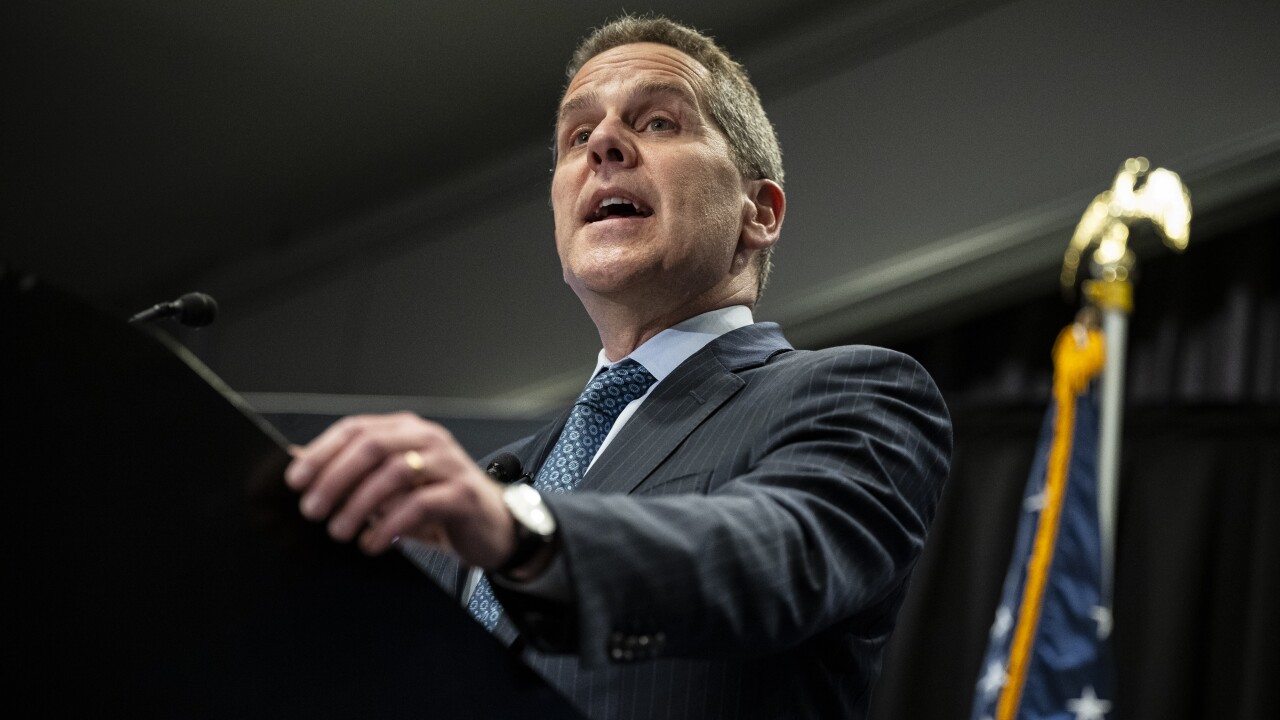The Consumer Financial Protection Bureau is making a comeback. The CFPB, which oversees financial institutions with a keen focus on consumer protection and ensuring financial markets are fair and equitable, was a diminished force during the Trump administration. Large financial institutions enjoyed both fewer enforcement actions and lower civil money penalties.
Now, well into the second hundred days of the Biden administration, the tide is turning, driven in part by heightened recognition of the disparate financial impacts of the pandemic, and a national consciousness raised by the racial justice movement. This sea change will have significant implications for any bank seeking to approach customer, community and regulatory relations holistically, and especially for larger banks, which are more likely to draw close regulatory scrutiny.
All large banks, in particular, should prepare for the return of “supervision by enforcement,” the philosophy that prevailed in the years following the financial crisis, out of which the CFPB was born. President Biden’s nominee to lead the CFPB, Federal Trade Commission member Rohit Chopra, was the bureau’s first student loan ombudsman under former CFPB Director Richard Cordray and is expected to return the bureau to its former place at the forefront of consumer protection in financial services.
Under Chopra, complex financial institutions with large consumer portfolios that had significant forbearance activities during COVID-19 and under the CARES Act are likely to be priority targets. Chopra’s Senate confirmation was recently delayed (again), but he is expected to be confirmed before the Senate’s August recess. In the meantime, acting CFPB Director David Uejio is taking his own steps to strengthen enforcement activities.
Among other shifts, the CFPB has signaled it will seek to apply fair lending/fair banking principles, such as the disparate impact theory of liability, to nontraditional (non-origination) activities. Notably, this will likely include the loan servicing activities of institutions with large mortgage, auto and consumer portfolios. The disparate impact theory of liability allows the government to establish discrimination based on the outcome of banking policies that seem neutral on their face.
The agency is already enhancing its bench of enforcement attorneys, and anecdotal reports suggest it has begun to cite more "matters requiring attention," with higher civil money penalties than was common in the last administration. Under the leadership of Uejio, the bureau has already initiated several interesting enforcement actions, with a heavy focus on debt collection and other activities seemingly exacerbated by COVID-19 and its economic aftermath.
As in the past, the bureau will leverage media attention to maximize pressure on large financial institutions it finds in violation of consumer protection laws and regulations, and will likely take increased numbers of enforcement actions jointly with the Department of Justice, Department of Housing and Urban Development and other federal agencies.
In his testimony before the Senate Banking Committee, and in other forums, Commissioner Chopra has said he will focus on the following areas of banking in particular:
- Auto lending, including both direct and indirect financing of new and used car purchases; the use of big data and alternative data sources in underwriting; defaults and repossessions; and, potentially, revising existing CFPB guidance concerning compliance with the Equal Credit Opportunity Act in indirect auto lending.
- Fair lending/fair banking/fair treatment, including application of ECOA and its implementing Regulation B, to discretionary underwriting, pricing and steering; application of disparate impact standards to mortgage lending and servicing, especially in the context of CARES Act loss mitigation and forbearance activities; use of artificial intelligence, alternative data and machine learning in credit decisioning and other financial models; statistical analysis of servicing decisions; analysis of online/digital marketing strategies; and potential application of fair lending principles to fraud and dispute management.
- Unfair and deceptive acts and practices, including the CFPB’s revised guidance on its “abusive” standard.
- Fair Credit Reporting Act, including priority assessments of credit reporting agencies and furnishers, inaccurate reporting of accommodations, and failing to conduct “reasonable investigation” of disputes during COVID-19.
- Military Lending Act and Servicemembers Civil Relief Act enforcement, and heightened attention to protection of veterans’ rights more generally.
- Mortgage lending, including loan origination, servicing and default management, loss mitigation, forbearance, modification, extension, refinance and foreclosure activities; protection of borrowers with limited English proficiency.
- Ancillary/add-on products (guaranteed asset protection, extended warranty programs, and various forms of credit insurance), including assessment of product utility and alignment between product value and costs to consumers and potential enforcement activity similar to that which followed the CARD Act of 2009.
- Consumer complaints, including disputes pertaining to loan servicing, debt collection, and credit reporting; anomalous incidents leading to consumer harm; emerging trends suggestive of systemic issues; and development of a comprehensive, documented process for investigating, identifying, documenting and remediating root causes of consumer complaints.
The emerging regulatory environment will present the opportunity to redouble commitments to enhancing diversity and inclusion and addressing systemic racism and inequality. It will also present the challenge of demonstrating this commitment to regulators through concrete outcomes.
Any bank that engages in the activities listed above should start thinking now about a comprehensive approach to CFPB readiness in order to identify potential risks of noncompliance with consumer protection laws and regulations and take appropriate corrective actions. This should include a continuous analysis of real-time consumer complaint data to identify potential deficiencies in consumer protections, and a modernization of how bankers approach risk management, potentially encompassing operational areas never before subjected to intense regulatory scrutiny.





